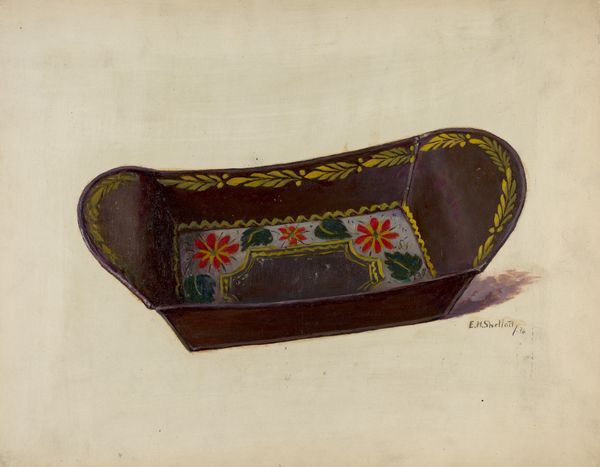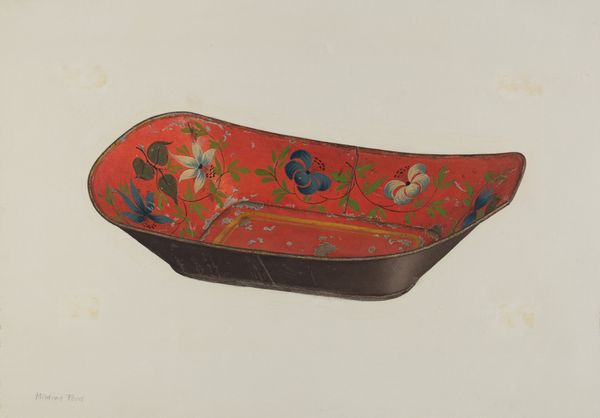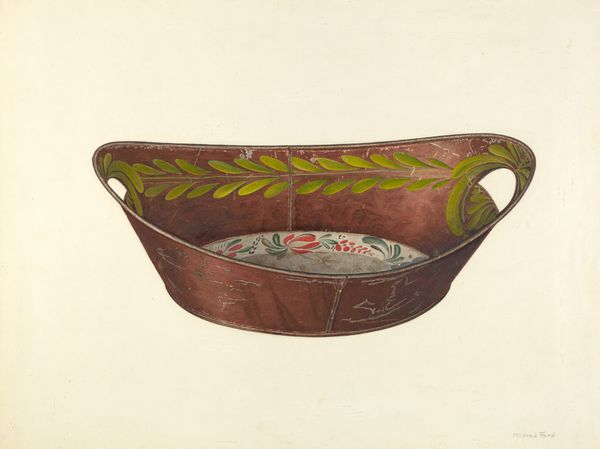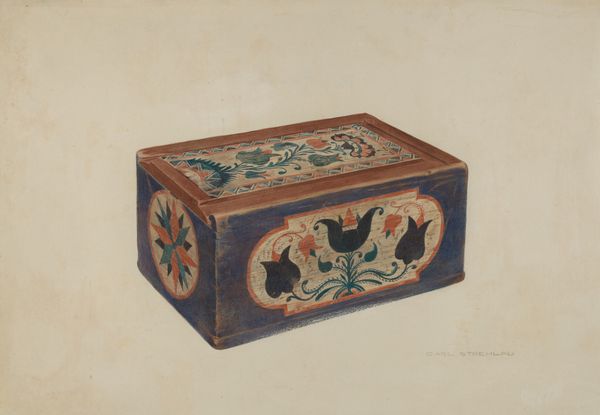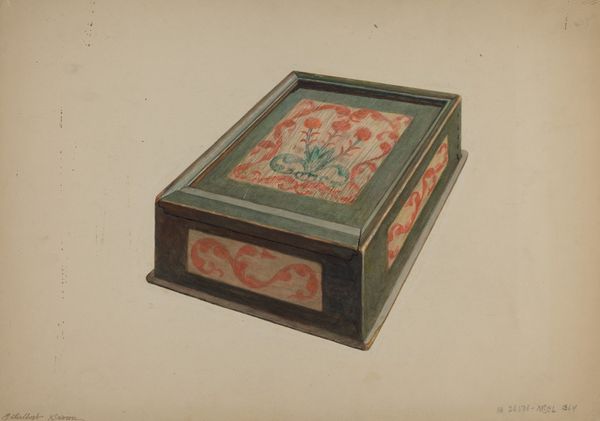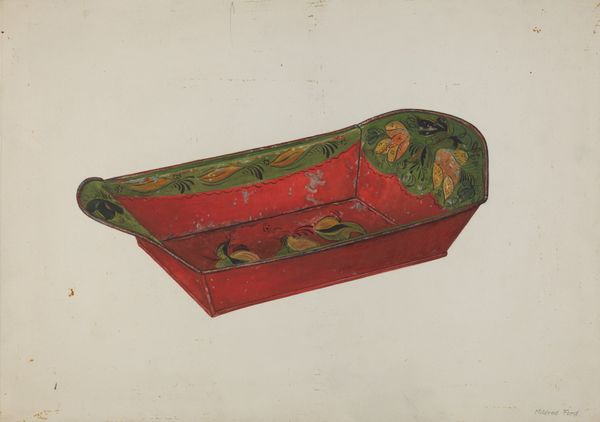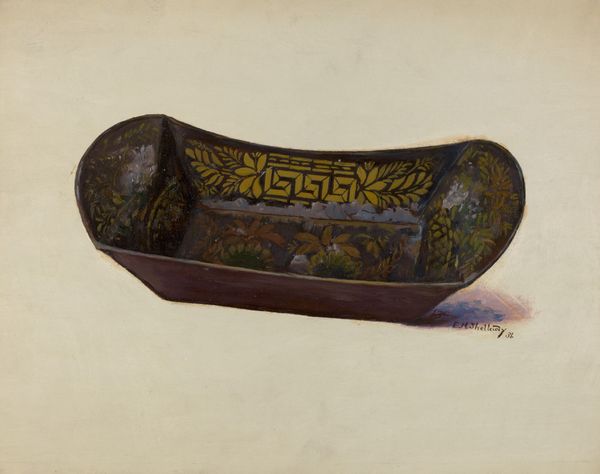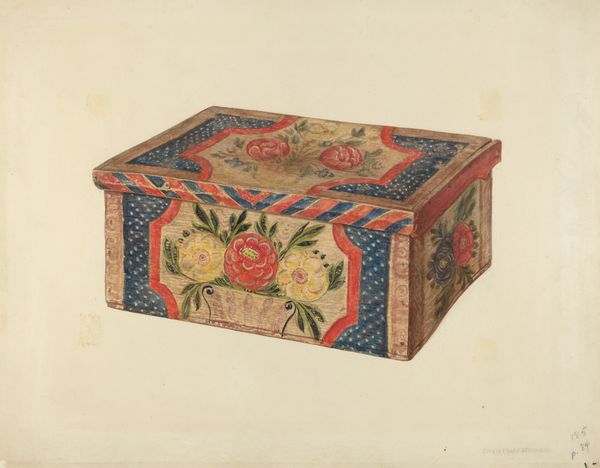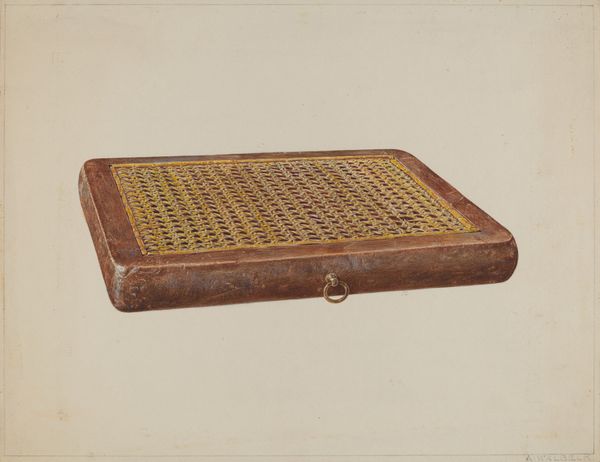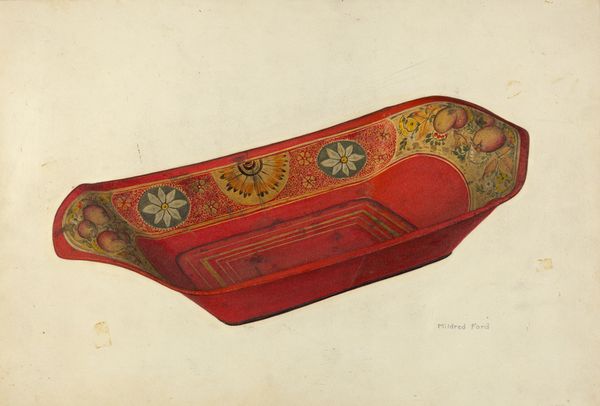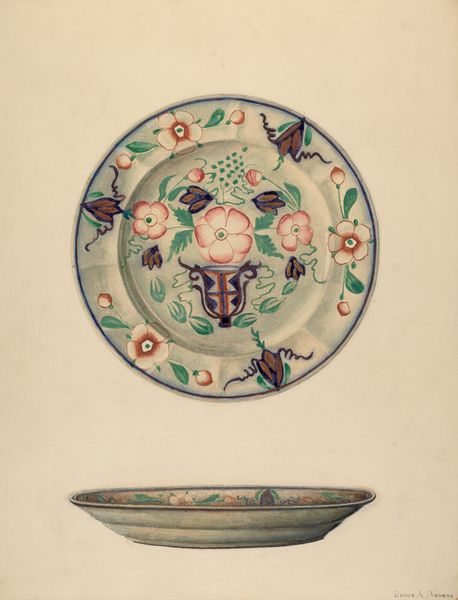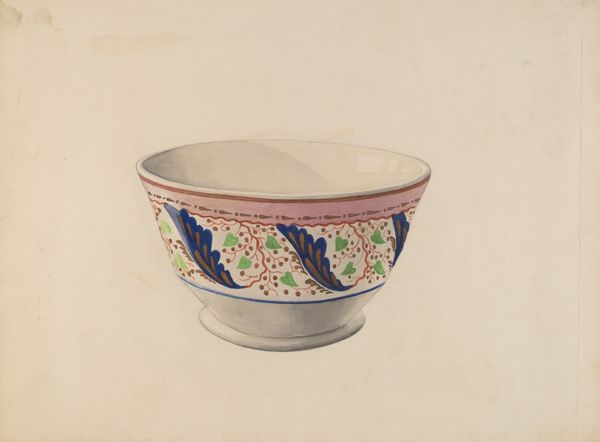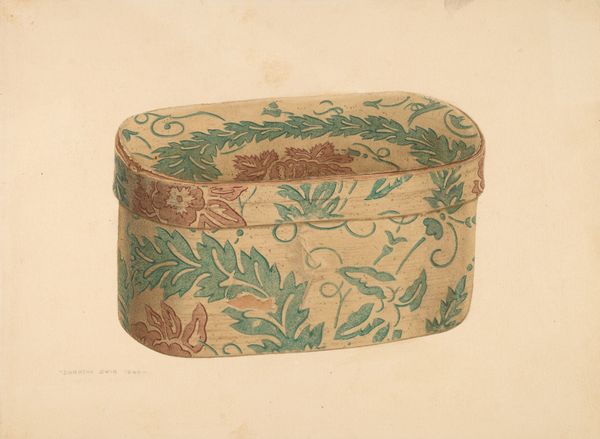
drawing, watercolor
#
drawing
#
watercolor
#
coloured pencil
#
folk-art
#
decorative-art
#
watercolor
Dimensions: overall: 35.8 x 50.8 cm (14 1/8 x 20 in.)
Copyright: National Gallery of Art: CC0 1.0
Curator: Up next we have "Tray," a vibrant watercolor and colored pencil drawing created by Myra Newswanger between 1935 and 1942. Editor: My eye is immediately drawn to the bright red and decorative folk art elements. There is a clear interest in pattern here. Curator: Absolutely. Newswanger’s work, including pieces like this, are often considered examples of decorative art with strong ties to folk traditions. It provides insight into a particular aesthetic preference within a specific cultural milieu, revealing aspects of community identity. Editor: The composition is quite striking. The leaves seem strategically placed around the edges, creating a rhythmic visual flow. The overall structure draws you in; note the interplay of colors—how the gold contrasts and complements the reds and greens. Curator: The social implications are particularly interesting. One might consider what function these objects would have served within that community, and whether the artist worked in response to a market demand. We might ask, how did decorative items reinforce or subvert existing social hierarchies? Editor: From a formal point of view, the shading creates depth. Although the shape is geometric, the artist gives it dimension through this subtle technique, especially underneath. The rendering, while precise, maintains a delicate, handmade quality. Curator: Right. It makes you think about the accessibility of art—who has access to materials, and how social conventions might dictate acceptable themes or techniques. The materials are a statement, as are the aesthetic choices. Editor: It all invites a very tactile experience, despite being a two-dimensional work. Considering the brushstrokes and the medium used, I feel there’s an effort to capture texture and form, adding to its aesthetic appeal. Curator: Indeed. "Tray" allows us to examine art as a carrier of social information, echoing values, preferences, and anxieties that shape identity at a certain point in history. Editor: Seeing its bold use of form and colour and discussing this with you, it feels more interesting than I initially assumed; and perhaps challenges how we define pure fine art.
Comments
No comments
Be the first to comment and join the conversation on the ultimate creative platform.
